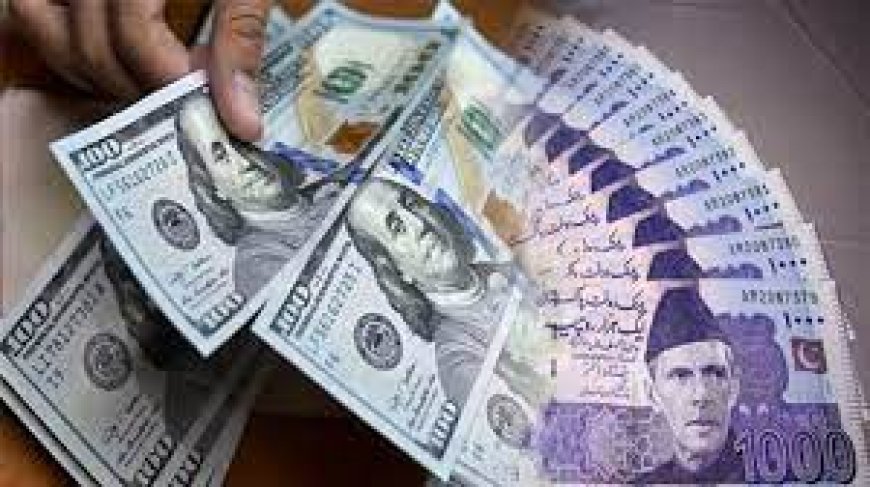Understanding the Exchange Rate: 1 USD to PKR
This article provides an in-depth analysis of the 1 USD to PKR exchange rate, its historical trends, current standing, and factors affecting its fluctuations.

1 USD to PKR
The exchange rate between the US Dollar (USD) and the Pakistani Rupee (PKR) is a critical indicator of Pakistan's economic health and international trade dynamics. Foreign exchange rates are influenced by various factors, including economic stability, political situations, and global market trends. This article provides an in-depth analysis of the 1 USD to PKR exchange rate, its historical trends, current standing, and factors affecting its fluctuations.
Historical Trends in the USD to PKR Exchange Rate
Understanding the historical trends of the USD to PKR exchange rate helps in predicting future movements. Historically, the Pakistani Rupee has experienced a significant depreciation against the US Dollar. This depreciation is attributed to several economic challenges faced by Pakistan, such as high inflation rates, trade deficits, and political instability.
Early Years
In the early years after Pakistan's independence in 1947, the PKR was relatively stable against the USD. During the 1960s, 1 USD was equivalent to about 4.76 PKR. However, the situation started to change in the following decades due to various economic pressures.
The 1990s and Early 2000s
The 1990s saw a marked depreciation of the PKR, primarily due to economic sanctions and internal political instability. By the year 2000, the exchange rate had shifted dramatically, with 1 USD equating to around 51 PKR. The early 2000s continued to see volatility, with periodic interventions by the State Bank of Pakistan (SBP) to stabilize the currency.
Recent Years
In recent years, the USD to PKR exchange rate has shown a steady upward trend. As of 2023, 1 USD is approximately 285 PKR. This increase reflects ongoing economic challenges, including debt repayments, balance of payments issues, and inflationary pressures.
Current Standing of the USD to PKR Exchange Rate
As of mid-2024, the exchange rate stands at around 290 PKR for 1 USD. This rate fluctuates daily due to market dynamics, international trade policies, and geopolitical events. The following sections explore the major factors influencing the current exchange rate.
Factors Affecting the USD to PKR Exchange Rate
Economic Indicators
Inflation Rates: High inflation in Pakistan erodes the value of the PKR, making imports more expensive and contributing to a higher USD to PKR exchange rate. Conversely, lower inflation rates can help stabilize the currency.
Interest Rates: Interest rate differentials between Pakistan and the US influence the exchange rate. Higher interest rates in the US attract investors to the USD, increasing its demand and value against the PKR.
GDP Growth: Economic growth indicators, such as GDP growth rates, impact investor confidence. A strong GDP growth rate in Pakistan can attract foreign investment, thereby strengthening the PKR.
Political Stability
Political stability plays a crucial role in determining the exchange rate. Political turmoil, changes in government, and policy uncertainties can lead to capital flight, reducing the value of the PKR. On the other hand, political stability and clear economic policies can boost investor confidence and stabilize the exchange rate.
Trade Balance
The balance of trade between Pakistan and its trading partners significantly affects the exchange rate. A trade deficit, where imports exceed exports, increases the demand for foreign currencies like the USD, leading to a depreciation of the PKR. Conversely, a trade surplus can strengthen the PKR. Before send money to uk from Pakistan must get the complete info and choose the secure way to transfer money.
Foreign Reserves
The level of foreign reserves held by the State Bank of Pakistan impacts the exchange rate. Higher reserves provide a buffer against economic shocks and help stabilize the PKR. Low foreign reserves, on the other hand, can lead to currency depreciation.
Remittances
Remittances from overseas Pakistanis are a major source of foreign exchange. An increase in remittances can boost the supply of USD in the market, supporting the PKR. Conversely, a decline in remittances can put pressure on the exchange rate.
Impact of the USD to PKR Exchange Rate on the Economy
Imports and Exports
A higher USD to PKR exchange rate makes imports more expensive, contributing to higher prices for imported goods and services. This can lead to increased production costs for businesses reliant on imported materials, thereby affecting their profitability. Conversely, a weaker PKR can make Pakistani exports cheaper and more competitive in international markets, potentially boosting export revenues.
Inflation
Exchange rate fluctuations directly impact inflation. A depreciating PKR can lead to imported inflation, where the cost of imported goods rises, leading to higher overall price levels. Conversely, a stable or appreciating PKR can help control inflation.
Foreign Debt
Pakistan's foreign debt is primarily denominated in USD. A higher USD to PKR exchange rate increases the cost of servicing and repaying this debt, putting additional pressure on the country's financial resources.
Foreign Investment
A stable and predictable exchange rate environment is conducive to attracting foreign investment. Exchange rate volatility can deter foreign investors, as it increases the risk of currency losses. Therefore, maintaining a stable exchange rate is crucial for attracting and retaining foreign investment.
Strategies to Manage Exchange Rate Volatility
Monetary Policy
The State Bank of Pakistan plays a critical role in managing exchange rate volatility through its monetary policy. By adjusting interest rates and using foreign exchange reserves, the SBP can influence the value of the PKR.
Fiscal Policy
Government fiscal policy, including budgetary measures and public spending, also impacts the exchange rate. Prudent fiscal management can enhance economic stability and investor confidence, thereby supporting a stable exchange rate.
Diversifying the Economy
Diversifying Pakistan's economy can reduce dependence on specific sectors and enhance resilience against external shocks. Promoting sectors such as technology, services, and renewable energy can create new sources of foreign exchange, supporting the PKR.
Boosting Exports
Policies aimed at boosting exports can help improve the trade balance and support the PKR. This includes providing incentives for exporters, reducing trade barriers, and enhancing product quality to meet international standards.
Conclusion
The USD to PKR exchange rate is a complex and dynamic indicator influenced by a myriad of economic, political, and social factors. Understanding these factors and their interplay is crucial for policymakers, investors, and businesses. By implementing effective strategies to manage exchange rate volatility, Pakistan can enhance economic stability and foster sustainable growth.
What's Your Reaction?



















